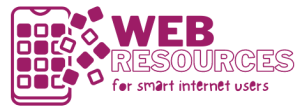Representing an idea, service or product in an immobile symbol is a task that goes back to the ancient Egyptians, who “marked” their cattle with hot plates with the simple purpose of identifying and distinguishing it from others. Over time, this dynamic helped create a business as the brand, represented in large part by the logo, became an almost natural indicator of the value of any product or service.
When it comes to creating a logo, it is common to think of reaching the most powerful brands that are in Times Square such as Apple, Google, Nike or Amazon and feel a bit of pressure. However, those visual identities were not born with the meaning they now have. The bitten apple or the swoosh, which now have a lot of value, originally was nothing more than a drawing that followed some basic regulations.

We believe that logo design should not be a frightening task for you. Logo should be relatively simple, easily remembered, built to last. There are no secret recipes but, with some very practical tips that accompany you in the process, you can create logos ready to get meaning and be successful in the market.
5 errors and 5 elements that cannot miss
Mistake # 1: Focus on the masses
You’re already there, you have the perfect business idea. It is very common for you to be passionate about the product or service that you want to offer and think it is for everyone, for the masses. Then you design something that can attract everyone.
This mentality is inherited from the television era when you had millions of people watching Chabelo every Sunday morning and you could reach many in the same way.
However, the interconnected world we live in now works the other way around and powerful brands focus on a particular consumer. In this way, they are more precise and achieve greater differentiation.
Element # 1: Reflect your consumer with your logo
Good logos always project a bit of your consumer’s identity and personality. To achieve this, you require a deep knowledge of who your client is. What do you think and what do you feel? What attracts you and what do you like? How do you behave with certain figures and colors?
Mistake # 2: Focus on your world
A common attitude in the creative industry, derived from arrogance or laziness, is to focus only on what is ours and neglect what others do.
The consequence is that we generate solutions that are already explored by others.
Element # 2: Make a matrix with your competitors
Some uncomfortable questions are: what exists in the market or in the industry? What colors abound? What elements are repetitive?
To make a matrix, define your axes and then classify your competitors by making hierarchies according to the criteria you defined. For example, the ‘x’ axis can be from the simple to the complex while the ‘y’ could be from formal to fun.
Mistake # 3: Focus on the computer
The computer is a great invention but it can stunt your creativity. If you start with the tools that the computer gives you, you will be tempted to resort to the most common or cliché. And in an identity, you look for the opposite.
Element # 3: Sketch on paper
Lose fear in pencil and paper! Sketching is an excellent way to improve your creative skills and think differently.
Drawing will make you feel unlimited and will encourage novel ways to represent that abstract idea that is your service or product.
Mistake # 4: Focus on trends
Many times they are the result of the latest effects available in popular design programs. The problem is that updates are becoming more frequent and what is now fashionable in two months may no longer work.
Element # 4: Design your guiding concept
During the process of creating the logo of a company that offered workshops, the guiding concept was human connections and it made a lot of sense to use connecting lines in the graphic identity. In Canvas layouts, you can find ideas that connect with your concept and start from there. For example this, where the line has a visual weight.
In addition to being unique and distinctive, a good logo should be timeless, that is, not subject to time. The best way to achieve these attributes is to return to the guiding concept: What does your brand contribute to the world that other brands do not contribute? What is the central axis of your product or service? What is the differential value and how does it look?
Mistake # 5: Focus on ‘nice’ typefaces
The moment in which you pass to the computer can represent a risk. You have the conceptual part well mastered and you have to choose the typeface. If you are good at drawing and you know about lettering, you could vectorize your own lyrics although that skill is not very common.
A frequent mistake is to choose a typeface based on your personal taste. The result can be a little readable or unfriendly font with Latin characters such as accent.
In the previous example, Hotel Cocoa is a chocolate boutique that has a very nice logo but not very readable. That is why the descriptor is the repetition of the name in a legible typeface.
Element # 5: Imagine your logo printed on a pen
A good tip that a typography professor gave me is to think about your logo printed on a large scale and on a small scale. Imagine your logo in a panoramic and also in a pen: how does it look? Can you read at a glance?
Scalability is a characteristic that you should look for in your logo and the type of letter plays a fundamental role.
